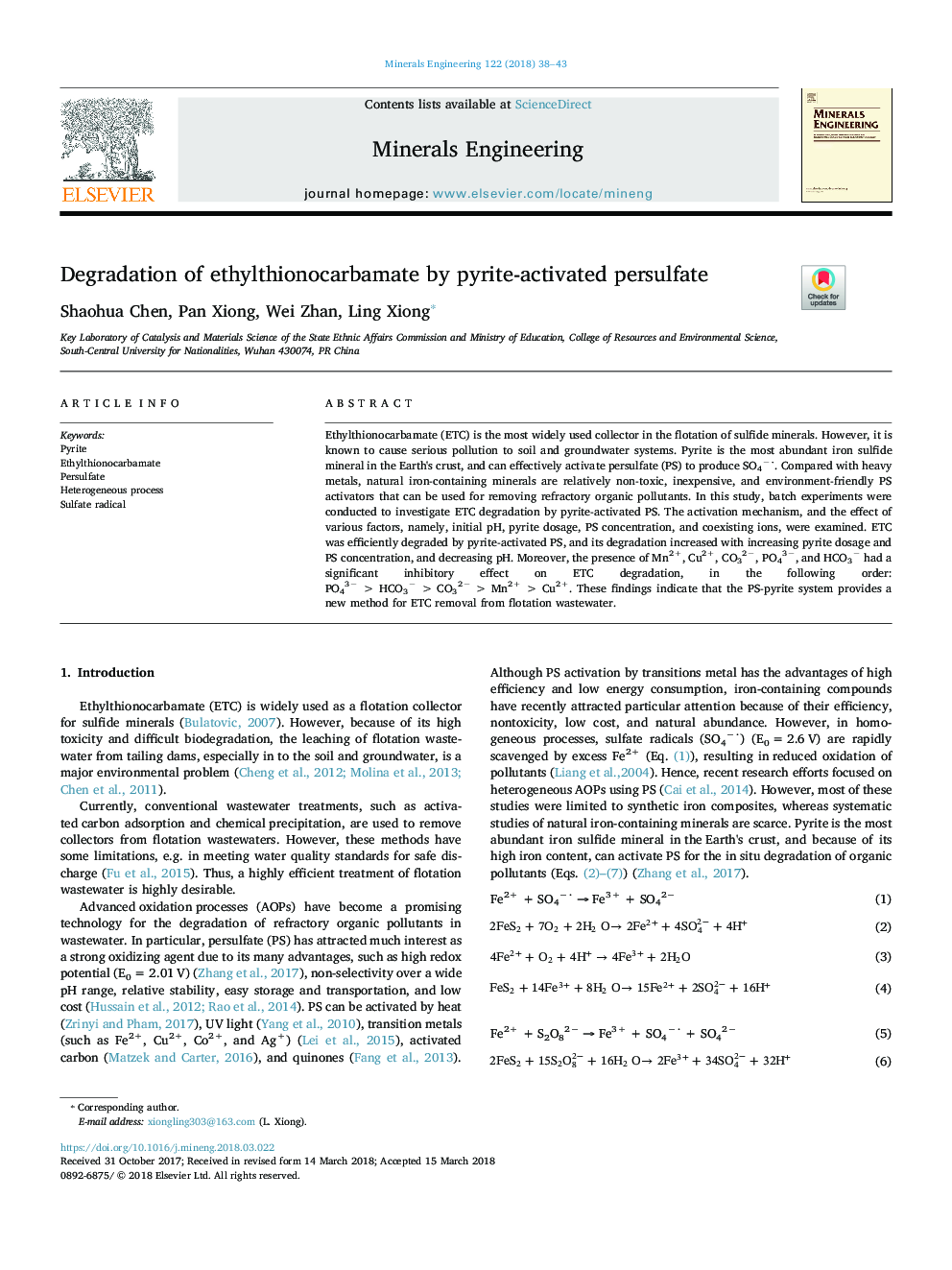| Article ID | Journal | Published Year | Pages | File Type |
|---|---|---|---|---|
| 6672298 | Minerals Engineering | 2018 | 6 Pages |
Abstract
Ethylthionocarbamate (ETC) is the most widely used collector in the flotation of sulfide minerals. However, it is known to cause serious pollution to soil and groundwater systems. Pyrite is the most abundant iron sulfide mineral in the Earth's crust, and can effectively activate persulfate (PS) to produce SO4â. Compared with heavy metals, natural iron-containing minerals are relatively non-toxic, inexpensive, and environment-friendly PS activators that can be used for removing refractory organic pollutants. In this study, batch experiments were conducted to investigate ETC degradation by pyrite-activated PS. The activation mechanism, and the effect of various factors, namely, initial pH, pyrite dosage, PS concentration, and coexisting ions, were examined. ETC was efficiently degraded by pyrite-activated PS, and its degradation increased with increasing pyrite dosage and PS concentration, and decreasing pH. Moreover, the presence of Mn2+, Cu2+, CO32â, PO43â, and HCO3â had a significant inhibitory effect on ETC degradation, in the following order: PO43ââ¯>â¯HCO3ââ¯>â¯CO32ââ¯>â¯Mn2+â¯>â¯Cu2+. These findings indicate that the PS-pyrite system provides a new method for ETC removal from flotation wastewater.
Related Topics
Physical Sciences and Engineering
Chemical Engineering
Chemical Engineering (General)
Authors
Shaohua Chen, Pan Xiong, Wei Zhan, Ling Xiong,
